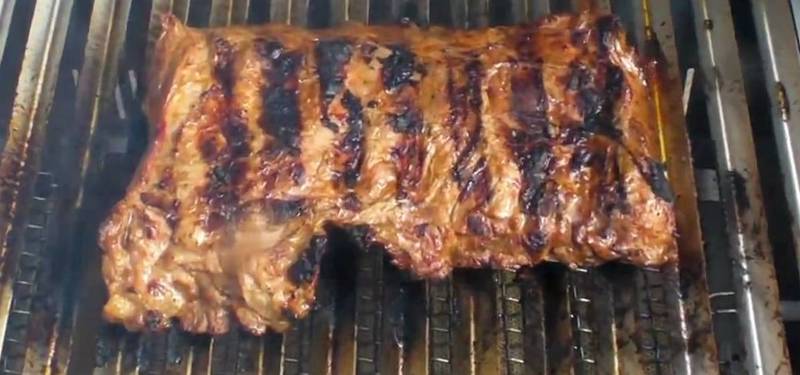How do I clean the stainless steel parts of my grill? According to the Specialty Steel Industry of North America, stainless steel needs to be cleaned for aesthetic considerations and to preserve corrosion resistance.
Stainless steel is protected from corrosion by a thin layer of chromium oxide. Oxygen from the atmosphere combines with the chromium in the stainless steel to form this passive chromium oxide film that protects from further corrosion. Any contamination of the surface by dirt, or other material, hinders this passivation process and traps corrosive agents, reducing corrosion protection. Thus, some form of routine cleaning is necessary to preserve the appearance and integrity of the surface.
Like any surface that is exposed to the environment, stainless steel can get dirty. Dirt and soil can consist of accumulated dust and a variety of contaminates that come from many sources, ranging from the wind to everyday use. These contaminates will vary greatly in their effect on appearance and corrosivity and ease of removal. Frequently, warm water with or without gentle detergent is sufficient. Next in order are mild non-scratching abrasive powders such as typical household cleaners. These can be used with warm water, bristle brushes, sponges, or clean cloths.
Ordinary carbon steel brushes or steel wool should be avoided as they may leave particles embedded on the surface which can lead to RUSTING. For more aggressive cleaning, a small amount of vinegar can be added to the scouring powder. Cleaning should always be followed by rinsing in clean hot water. When water contains mineral soldis, which leave water spots, it is advisable to wipe the surface completely with dry towels.
Fingerprints and Stains - Fingerprints and mild stains resulting from normal use are the most common surface contaminates. Fortunately, these usually affect only appearance and seldom have an effect on corrosion resistance. They are easy to remove by a variety of simple cleaning methods. Fingerprints are probably the most troublesome marks to remove from the surface of smooth polished or bright finished stainless steel. Fortunately, they can be removed with a glass cleaner or by gentle rubbing with a paste of soda ash (sodium carbonate) and water applied with a soft rag. Once again, this should be followed by a thorough warm water rinse.
For more stubborn stains see the Specialty Steel Industry of North America's web site.
Also Read...
- BBQ 101: Cleaning Your Grills Burners
- BBQ 101: How Do I Clean The Grilling Grids
- BBQ 101: Barbecue Grilling Safety Tips
- BBQ 101: Charcoal Grill vs. Gas Grill Debate


